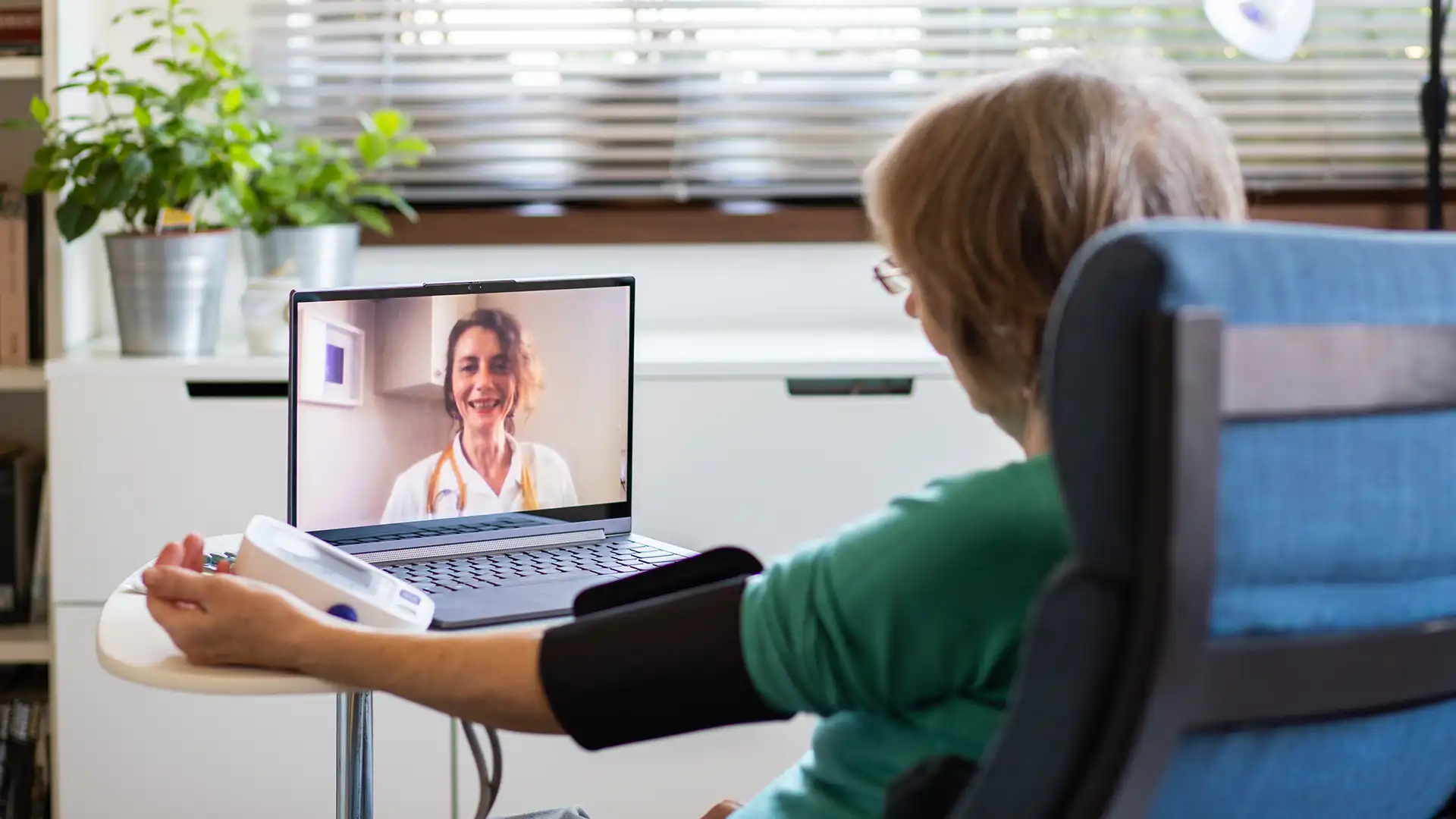Tension headaches are a frustrating but common condition, affecting millions worldwide. In fact, they’re the most frequent type of headache diagnosed in adults. They can creep in during a stressful workday or build up from poor posture and fatigue.
The good news? You don’t always need a prescription to get relief. This guide will show you how to get rid of tension headaches quickly and safely at home, using easy remedies, self-care strategies, and telehealth support to guide your treatment when needed.
What Are Tension Headaches?
Tension headaches are identified as the most common type of headache and are typically described as a constant, dull ache or a feeling of tightness around the forehead, temples, or the back of the head and neck. They can occur occasionally or become frequent, sometimes even daily, especially in people under chronic stress or those with sedentary lifestyles. These headaches are usually bilateral, meaning the pain is felt on both sides of the head rather than just one side, which helps differentiate them from migraines or cluster headaches.
Many people with tension headaches also report a feeling of pressure behind the eyes or increased sensitivity to noise, although these symptoms are generally milder than those experienced with migraines.
Tension headaches symptoms include:
- A dull, steady ache or pressure around the head
- Discomfort or tightness in the neck and shoulders
- Scalp tenderness
- Mild sensitivity to light or sound
If you experience tension headaches more than 15 days a month for several months, you may have chronic tension headaches. These can greatly disrupt your quality of life. Managing chronic cases often involves a combination of:
- Preventive medications prescribed by a doctor
- Physical therapy or massage
- Stress-reduction programs
- Behavioral therapy
Telehealth makes it easier to consult with a doctor from home about chronic symptoms. A virtual visit can help you get the right treatment plan without waiting for an in-person appointment.
What Causes Tension Headaches?
Understanding the causes of tension headaches can help you avoid them. Common triggers include:
- Mental stress from work, school, or relationships
- Muscle tension in the neck and shoulders from poor posture or fatigue
- Jaw clenching or teeth grinding, often during sleep
- Eye strain from too much screen time without breaks
- Skipping meals or dehydration
- Lack of sleep or poor sleep quality
How Long Do Tension Headaches Last?
Tension headaches vary widely in duration depending on the cause, severity, and how quickly you take steps to manage them. For some people, a tension headache may last as little as 30 minutes, often resolving with rest, hydration, or a short break from stress or screen time. Others may experience headaches that persist for several hours or even a few days, primarily if the underlying tension, like poor posture, lack of sleep, or ongoing stress, isn’t addressed.
The Impact of Lighting on Headaches
Lighting can directly affect eye strain and the risk of tension headaches. Here’s how to reduce the impact:
- Avoid harsh lighting like fluorescent bulbs, which can trigger discomfort.
- Use soft, warm lighting or natural light to ease eye strain.
- Minimize screen glare by adjusting your monitor settings or positioning.
- Try blue light filters or anti-glare lenses if you spend long hours on screens.
- Install dimmers or adjustable lighting to create a calm, headache-friendly environment.
How to Get Rid of Tension Headaches Fast
When a tension headache strikes, it can feel like a tight band wrapped around your head, distracting, draining, and disruptive to your day. While these headaches are rarely dangerous, they can make it hard to concentrate, relax, or sleep. Try these simple, drug-free methods first:
- Apply a warm compress to the back of your neck or forehead to ease muscle tightness
- Stretch your neck, shoulders, and upper back gently to release tension
- Lie down in a quiet, dark room and rest your eyes
- Hydrate with a glass of water, especially if you’ve skipped fluids
- Practice deep breathing or guided meditation to reduce stress
These quick remedies can help stop a headache before it worsens.
Natural Tension Headaches Treatment at Home
If you frequently suffer from tension headaches, developing habits that prevent them is just as important as fast relief.
At-home treatments include:
- Consistent sleep schedule: Aim for 7–9 hours of quality sleep each night
- Daily movement: Light exercise like yoga, walking, or stretching improves circulation and reduces muscle tension
- Eye breaks: Follow the 20-20-20 rule if you’re at a screen all day
- Posture checks: Adjust your workstation to reduce strain on your back and neck
- Hydration and regular meals: Avoid skipping meals and drink plenty of water
Hydration and headache prevention:
- Aim for 6–8 glasses of water daily, more if you’re active or in a dry environment.
- Carry a reusable water bottle to prompt regular sips during the day.
- Balance your caffeine intake, as too much can dehydrate you and increase the risk of headaches.
- Add hydrating foods like cucumbers, oranges, or watermelon to your meals.
Staying hydrated helps maintain brain function, eases muscle tension, and supports overall headache prevention.
Does Caffeine Help Tension Headaches or Make Them Worse?
Caffeine can offer temporary relief from tension headaches for some people by narrowing blood vessels and enhancing the effectiveness of certain pain relievers. However, relying on it too often may backfire, leading to withdrawal headaches or worsening symptoms if your body becomes dependent. It’s best used occasionally and in moderation, ideally alongside hydration and rest.
The Importance of Staying Active
Sitting too long, especially with poor posture, can lead to muscle tightness and frequent tension headaches. Staying active helps by:
- Improving circulation to reduce pressure in the head and neck.
- Releasing muscle tension in standard pain zones like the shoulders and upper back.
- Boosting natural endorphins, which help relieve stress and discomfort.
Easy ways to stay active during the day:
- Stand up and stretch every 30–60 minutes.
- Take short walking breaks, even just around your home or office.
- Try desk-friendly exercises or light yoga.
How Breathing Techniques Can Help
Practicing controlled breathing exercises can help regulate your stress response and reduce the muscle tightness that leads to tension headaches. Deep breathing, box breathing, or diaphragmatic breathing can be done anywhere, making them easy to integrate into your day. Just five minutes of daily practice can offer noticeable relief over time.
When to Use Medication
While lifestyle changes and natural remedies are often enough to ease mild tension headaches, there are times when medication can play an important role, especially if the pain is persistent, interfering with your daily life, or not responding to home care. Over-the-counter (OTC) medications can provide fast relief and are generally safe when used occasionally and correctly.
- Ibuprofen (Advil) and Naproxen (Aleve) are nonsteroidal anti-inflammatory drugs (NSAIDs) that help reduce inflammation and muscle soreness, which may be contributing to your headache.
- Acetaminophen (Tylenol) is a good alternative if you have stomach issues or can’t tolerate NSAIDs due to other health conditions. It works by blocking pain signals in the brain, but does not reduce inflammation.
These medications are most effective when taken at the first sign of a headache, rather than waiting until the pain becomes severe. However, it’s crucial not to rely on them too frequently.
Using OTC pain relievers more than twice a week can lead to medication overuse headaches, also known as rebound headaches, where the headache returns or worsens after the medication wears off. If you find yourself needing painkillers often, it’s time to talk with a healthcare provider about safer, longer-term treatment options.
Telehealth Support for Tension Headaches
If your headaches are persistent or difficult to manage, telehealth offers a convenient way to get help. Through virtual visits, you can:
- Discuss your symptoms with a healthcare provider
- Receive personalized treatment recommendations
- Get prescriptions if needed
- Explore whether further testing or referrals are necessary
Visit our Telehealth for Tension Headaches Page to access expert care that’s convenient and tailored to your needs.
Conclusion
Understanding how to get rid of tension headaches at home gives you the power to manage discomfort before it takes over your day. Combining quick, effective relief strategies like hydration, rest, stretching, or gentle massage with long-term lifestyle changes such as better posture, regular physical activity, and stress management can significantly lessen the frequency and intensity of these headaches. Small, consistent actions often make the most significant difference in how your body responds to daily stress.
You don’t need to wait until the pain becomes overwhelming. The earlier you respond with the right tools, the easier it is to stop a tension headache. Whether it’s adjusting your lighting, staying active, or reaching out to a telehealth provider for added support, you have simple and effective options. Taking charge of your self-care routine can lead to lasting relief and a better quality of life.
Frequently Asked Questions (FAQs)
Can changes in diet impact tension headaches?
Yes. Certain foods, such as processed meats, excessive sugar, or skipped meals, can contribute to tension headaches. A balanced diet with whole foods and steady meal timing may help reduce headache frequency.
Do essential oils work for tension headaches?
Some people find relief using peppermint or lavender oil applied to the temples or neck. While results vary, these natural remedies are generally safe and can be part of a home care routine. Always do a patch test first to check for skin sensitivity.
Is it normal to feel tired after a tension headache?
Yes. Tension headaches can drain your mental and physical energy, especially if the pain lingers for hours or disrupts sleep. Resting and staying hydrated afterward can support faster recovery.



